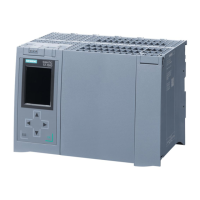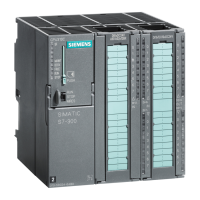Commissioning
12.4 Operating and system states
S7-1500R/H redundant system
402 System Manual, 01/2024, A5E41814787-AF
① POWER ON → STARTUP, POWER ON → SYNCUP
transition
The CPUs implement pairing after switch-on. The redundant system then
switches to STARTUP if:
• The mode selector is set to the RUN position,
• The preceding "POWER OFF" was triggered by an interruption of the
power supply,
• The hardware configuration and program blocks are consistent,
and
• The startup type "Warm restart - RUN" is set
or
• The startup type "Warm restart - Operating mode before POWER OFF" is
set and the system was in RUN-Solo, SYNCUP or RUN-Redundant before
POWER OFF.
The CPU that becomes the primary CPU runs the STARTUP.
The primary CPU switches to the STARTUP operating state.
STARTUP, the primary
CPU clears the non-
retentive memory and
resets the contents of
non-retentive data
blocks to the initial val-
ues of the load memory.
Retentive memory and
retentive DB contents
are retained.
transitions
The CPUs implement pairing after switch-on. The primary CPU then switches
to the STARTUP operating state if:
• The mode selector is in the RUN position;
• The preceding "POWER OFF" was triggered by an interruption of the
power supply,
• The hardware configuration and program blocks are consistent,
and
The startup type "Warm restart - RUN" is set
or
• The startup type "Warm restart - Operating mode before POWER OFF" is
set and the CPU was in STARTUP, RUN, RUN-Syncup or RUN-Redundant
before POWER OFF.
The CPUs implement pairing after switch-on. The backup CPU then switches
to the SYNCUP operating state if:
• The mode selector is in the RUN position
and
• The primary CPU is in the STARTUP or RUN operating state.

